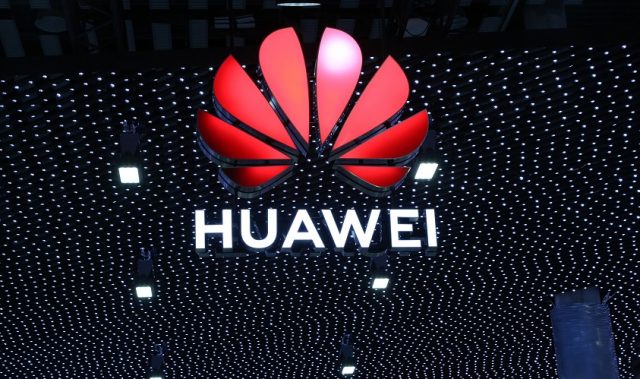
AsianScientist (Jan. 30, 2020) – Fifty years ago, a 21-year-old student transmitted the first message over the internet: LO. Charley Kline was trying to send the message “LOGIN” from his location at the University of California, Los Angeles, to Stanford University, but the system crashed before the full word could be sent. And lo, the internet was born.
Though Kline could not have anticipated it at the time, the internet that subsequently developed out of the ARPANET system he was working on has gone on to change the world profoundly. In 1969, the most powerful companies in the world were automobile, oil and electricity companies; today our world is shaped by the likes of FANG: Facebook, Amazon, Netflix and Google—all companies that would not exist without the internet.
As a ‘general purpose technology’ like the internet and electricity before it, 5G has a similar transformative potential, said Mr. Paul Scanlan, chief technology officer of telecommunications provider Huawei.
“Everyone talks about 5G from three aspects. They first talk about speed, speed, speed. Then they talk a little bit about latency, and even less about massive machine connections,” he said.
“But if you think about what 5G really does, it is a platform for transformation. 5G transformation gives us new opportunities for fixing problems, new business opportunities and new ways of thinking about the world.”
Ground zero: The telcos
The first industry to confront the advent of 5G is, quite naturally, telecommunications. As owners of the physical networks, telecommunication companies or telcos are at the forefront of making decisions about how to deploy 5G, with all its attendant costs. On the issue of cost, Scanlan is unequivocal:
“5G is cheaper than 4G—if you have growth,” he said. “If you don’t have growth, then you don’t need to invest anyway.”
The reason 5G can be cheaper than 4G is that when consumer demand for data exceeds the network’s capacity, the only option that telcos have is to densify the network.
“This means more towers and more sites. To find a site, acquire it, pay the rental and put the backhaul input in can take up to a year and a half in some countries. Not only that, it is also very capital intensive,” Scanlan explained.
In contrast, 5G provides telcos with a much higher bandwidth over the same amount of spectrum, and with that, the headroom to support both present and future customers.
This ability to support more data-hungry customers is particularly attractive to telcos in Asia, who collectively service more than half of the mobile subscribers in the world. According to a report by the Global System for Mobile Communications Association (GSMA), 90 percent of the 370 million new mobile subscribers by 2025 will come from just six Asian countries: India, China, Pakistan, Indonesia, Bangladesh and the Philippines. Though 4G networks will remain important in these countries, 5G will undoubtedly go a long way towards meeting the anticipated demand.
“If you look at India, Pakistan and Bangladesh in particular, their largest cities have a very high population density. Because the density is very high, using any other type of technology that is not as spectrally efficient as 5G will mean that you are either going to run out of spectrum or you’re going to have a lot of cost challenges,” Scanlan said.
Furthermore, he continued, 4G is around five to fifteen times more efficient than 3G, and 3G is at least five times more efficient than 2G, he added. This means that if a telco has a 2G customer, that customer is consuming at least 15 times more resources than if they switched to 4G.
“If your costs are mainly building sites and power, anything to make things cheaper and more energy efficient would lower your operating costs—why wouldn’t you want to do it?” Scanlan said. “So 5G has nothing to do with speed; it all comes back to money. Follow the money.”
It is no surprise, then, that Asia has wholeheartedly embraced 5G and is now at the forefront of 5G deployments. South Korea may have been the first country to deploy a nation-wide network, but China currently leads in terms of the largest 5G deployments, with over 130,000 base stations installed as of the end of 2019. In fact, the GSMA expects China to be the largest 5G market by 2025 with a total of 460 million 5G users, more than the number of users in Europe and the United States combined.
Approximately half of all the current deployments in China, and many of the planned 2020 deployments in countries such as Malaysia and the Philippines, are being provided by one company: Huawei.
Rising on research
Although it is now the largest telecommunications equipment maker in the world, Huawei began modestly in 1987 as a company re-selling telephone switches. At the time, Finnish company Nokia had launched its first mobile phone, the Mobira Cityman 900, which ran on the then-revolutionary 1G network. Such mobile phones were the preserve of the elite and the iPhone was still a distant 20 years away; few had an inkling of the mass market mobile revolution that was about to unfold with subsequent generations of mobile networks.
“We didn’t have a brand name or our own product, so we couldn’t compete against the big boys in Shanghai and Beijing. Following the principles of business 101—do business where you can—we started selling our switches in rural China,” Scanlan shared. “But after having had our product taken away from us, our founder Mr. Ren Zhengfei began to re-think the business model: Are we re-sellers or do we want to be inventors?”
With this new mandate to develop in-house research and development (R&D) capabilities, Ren invested his own money to start a team of about 50 people. Today, approximately 45 percent of Huawei’s 188,000-strong workforce are R&D staff, working on everything from chip design to mathematics.
“For example, we spent a lot of money on researching intrinsic materials, looking beyond silicon and graphene for semiconductors and alternatives to lithium for batteries,” Scanlan said.
By 2018, Huawei was second only to Amazon in terms of R&D spending, its US$15.3 billion research budget outspending everyone from Alphabet to Apple. That same year, Huawei was also the top patent filing company in the world with over 5,400 patents, almost double the number of patents held by runner-up Mitsubishi Electric.
“We’ve gone from a company that didn’t even have a single product to one that holds between 30 to 40 percent of the total 5G intrinsic patents,” Scanlan said.
Huawei’s aggressive push into R&D coincided with a time of turmoil for the other telecommunications equipment makers. Once the market leader, Nokia found itself selling off its handset business to Microsoft in 2013, only to have it abandoned altogether just two years later. Similarly, 2012 saw Swedish competitor Ericsson sell its phone business to Sony, the same year that Huawei overtook the company in terms of annual sales. The situation for equipment manufacturers is even more dire in the US; while Nokia and Ericsson remain as potential alternatives to Huawei, AT&T’s equipment division—Lucent—no longer exists today, leaving the US with no domestic producers of 5G hardware.
Inclusion or separation
In May 2019, Huawei was restricted from doing business with the US when it was placed on the Department of Commerce’s Bureau of Industry and Security Entity List. The move affected the launch of Huawei’s latest handset, the Mate 30, which was unable to run popular apps like Gmail, Google Maps and YouTube or any other apps on the Android operating system.
This latest action against Huawei has drawn the company into the ongoing trade war between China and the US, which has alleged that reliance on Huawei technologies would give China ‘backdoor’ access to other countries’ networks. Although traditional allies like Japan and fellow Five Eyes intelligence alliance members like Australia have followed the US’ lead and banned Huawei from participating in their 5G networks, other countries have either embraced Huawei or kept the door open to future partnerships.
“Inclusion is better than separation,” Scanlan said. “It’s unfortunate that the US didn’t go in this direction, but I’m sure it will be resolved.”
Scanlan maintains that Huawei is a private company and does not answer to the Chinese government. In September 2019, Huawei’s chief executive officer Ren offered to license the company’s 5G portfolio, including patents, code and technical blueprints, to US buyers, giving them the opportunity to analyze the technology for vulnerabilities and even make their own modifications.
“We are inviting people to come and talk to our customers, look at our facilities and inspect our software. If you find something or think the coding is not done according to Western standards, we’ll pay our own money to fix it,” Scanlan said. “Now, what do you think will happen to Huawei? We’re going to go from this good company to a greater company, because we’re taking the initiative to demonstrate our capabilities and improve.”
“If you are a legitimate agency and you want access to information, you have to go to the telecom company, which, according to the standard that all vendors comply with, can do what is called a lawful intercept. At that point, the government agency is allowed to do what it believes is important for the national security of the country; that’s normal,” he said.
For Scanlan, the more urgent vulnerability that needs to be addressed is at the application layer, where there are no standards to ensure security.
“Most of the problems in a network originate from people inside the network, downloading malicious software for example,” he said. “So while everybody is focusing on Huawei and China, there’s the application layer that is left completely open.”
5G for the new FANG
Despite the ban, Huawei remains able to do business in the US thanks to a temporary license. The company, which supplies networking equipment to many parts of rural America, was granted a 90-day reprieve to allow continuity of service in those areas. Since the ban was first announced in May 2019, the reprieve has been extended three times.
Though it is unclear how the impasse will play out, given the uncertainty of the global economic climate and the upcoming US elections, 2020 looks set to be a significant year for 5G. Japan, India, Vietnam and Singapore are among the countries that have announced plans to launch 5G networks in 2020; and on the other side of the equation, 2020 is also when ‘true’ 5G phones that can support low-band to millimeter-wave frequencies will hit the market.
Governments and businesses alike are eagerly pursuing 5G not simply to facilitate incrementally faster downloads. What is at stake with 5G is the next generation of FANGs, world-changing companies that don’t exist yet but have figured out how to harness the transformative potential of 5G. For a start, 5G represents an opportunity to transform the telcos, Scanlan said, changing their mindset from selling SIM cards to selling services to help companies think about how to adopt 5G. But the real impact of 5G is likely to only be felt in a few decades, when new 5G-enabled businesses start springing up.
“There are a couple of challenges to transformation. Firstly, the company may not be aware of or know about 5G capabilities. Secondly, the telco may not understand the business opportunity in that particular sector, for example, in healthcare. The third factor is whether the government will allow it to happen,” Scanlan said. “Take the example of a connected ambulance, you would need the regulators, industry and telco all coming together to try and make that happen.”
“You’ve got all these transformative opportunities, particularly in healthcare, education and transport,” he said. “It’s not that 5G is the thing that will do it all, but it is an operating point that allows transformation to happen.”
This article was first published in the January 2020 print version of Asian Scientist Magazine.
Click here to subscribe to Asian Scientist Magazine in print.
———
Copyright: Asian Scientist Magazine.
Disclaimer: This article does not necessarily reflect the views of AsianScientist or its staff.












